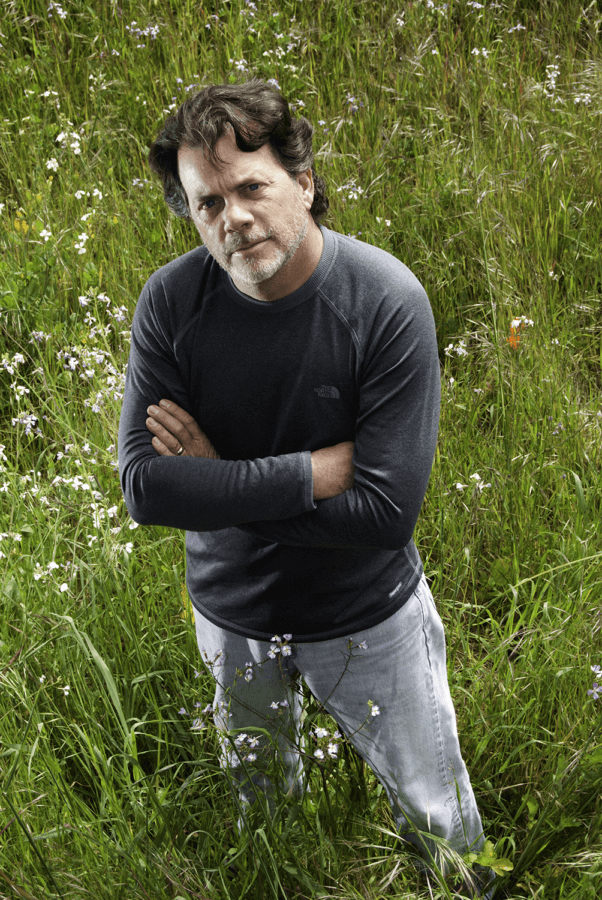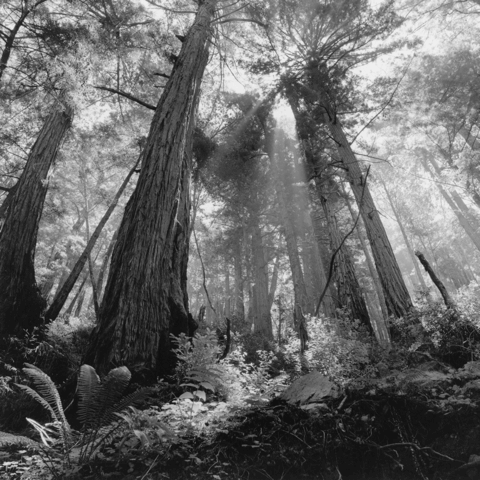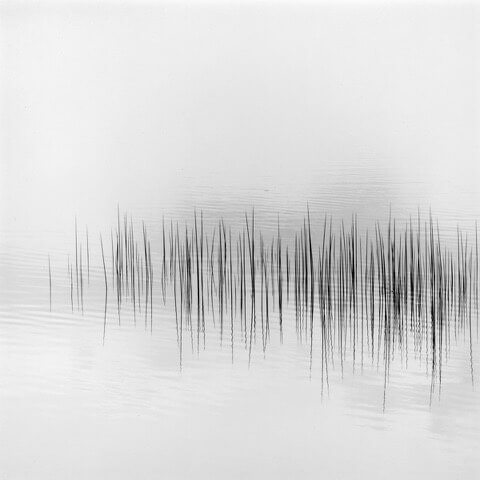SemperVoices: Redwoods, and Seeing Ourselves
Robert Buelteman discusses his craft and the transitory nature of things.

Robert Buelteman
Redwoods have captured our imagination for millennia. Despite several generations of conservation, care, and restoration, we still largely think of them as a resource for storing carbon, harboring wildlife, and sheltering waterways and habitats. They are, but for some, they are so much more, and perhaps we are so much less.
In this issue of SemperVoices, we talk to contemporary artist Robert Buelteman about redwoods as an idea. You can also join us Under the Redwoods on February 23, at 1 p.m. Register for the free webinar here.
Redwoods endure as icons, and you have some ideas on why they inspire us. Can you talk about how you see redwoods, and what themes you will be exploring in the webinar?

Lafler Redwoods, courtesy of Robert Buelteman
As a person who has sometimes struggled with his place in the world, I find it useful to reflect on the transitory nature of things. Seeing my life in a larger context provides relief from my day-to-day concerns and is useful in weathering the difficulties of life and living. For me, this larger context is most often found in nature, hence the focus of my photography.
There is nothing quite like stopping at Tioga Pass in Yosemite, and seeing with my mind’s eye the glaciers that covered the land so recently, when only the top 1,000 feet of the surrounding mountains were above their surface.
Our appreciation of redwoods provides similar solace and the opportunity to see ourselves in the context of millennia.
Who has not stood in front of the obligatory redwood cross-section at any one of dozens of parks and not been stricken with awe, when placing their finger on the tree ring identified as having grown when Jesus was born?
Having spent so much of your career out in nature, it may not be a surprise that you have resisted digital image capture. Can you say more about why that’s important to you? What have you learned from this approach that you may have missed by going digital?

Reeds and Water, courtesy of Robert Buelteman
I don’t believe that analog image capture is any more natural than digital. In the “old” days–that is 30 years ago–we were at the mercy of what we used to call “The Great Yellow Father”; that is, the Eastman Kodak Company. Now we are serving a number of tech companies and platforms. In the creeping commercialism that pervades American society, there are few photographers of note that haven’t been co-opted by Adobe, Epson, Nikon, Canon, etc.
I think digital imaging is nothing short of amazing! It has opened the world of photography to the masses. What took me decades to master is now available to everyone with a phone! This is the good news. The bad news is that it breeds a certain careless lack of respect for the medium and denudes the art form of its potential power. The reason I don’t work digitally are the old axioms “You reap what you sow” and “Garbage in, garbage out.” We are now awash in photographs that meant nothing when taken, and represent little more now.
Personally speaking, digital imaging brings out qualities in me that can be crippling as an artist: laziness, lack of preparation, carelessness, and worst of all, the attitude of “I’ll fix it later in Photoshop.” Some of my favorite images were years in the making, observing seasons, water flows, atmospheric requirements, etc. My photography is my life–it is the only arena in which I have been able to make something more important than myself, and it is incumbent on me to give it everything I have.
You grew up here in the Santa Cruz Mountains region. What are your hopes for the future and how we coexist with nature here in our community? How has your work informed that perspective?

Courtesy of Robert Buelteman
I think our country and our species have entered a period of significant decline with its focus on the individual and lack of understanding that we are but one strand in the web of life. At 67, I only see cracks in the foundation, but know my 30-something sons will unfortunately have a front row seat to significantly more breakdowns in the biosphere and in humanity. This will not be pretty.
My hopes are for their generation to prove more capable in dealing with environmental catastrophe than ours has. As a young man, I thought making photographs of the beauty, wonder, and balance of nature would make a difference. Sadly, that has not proven to be the case. But this remains the good fight for me, and I will continue on the path I’ve made for myself as long as I can.
Check out Under the Redwoods for webinars about redwoods featuring Armando Quintero, Val Lopez, Emily Burns, and more.
Also visit Robert Buelteman’s new exhibition at Art Ventures Gallery: Chasing the Light at Stanford’s Jasper Ridge (2010-2014) from February 1 – March 31, 2021.

